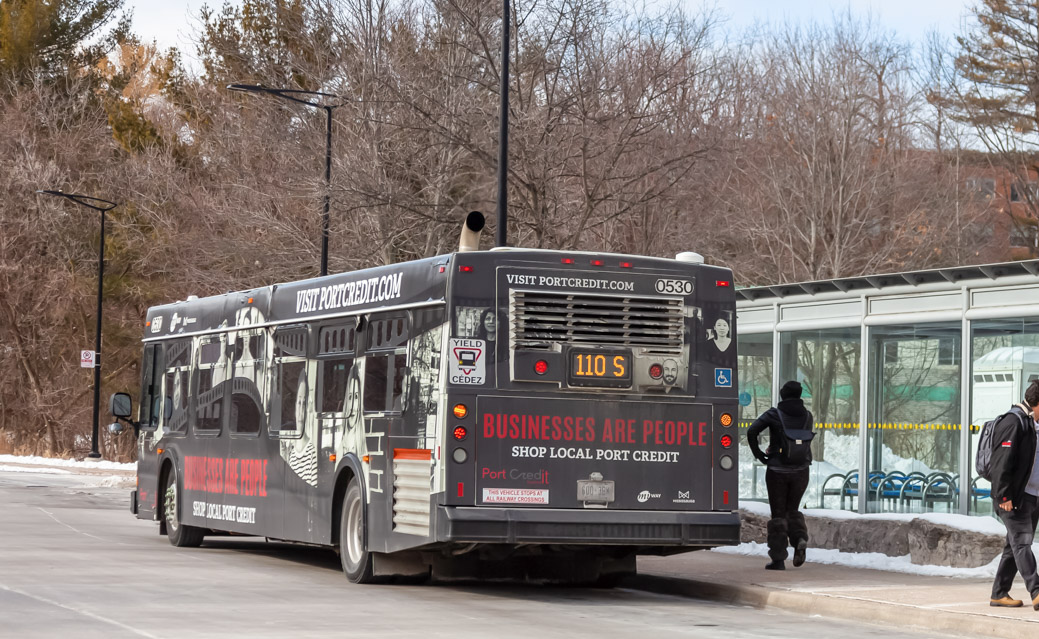Do you commute by bus or by car?
With the rising price of gas, students reflect on which method of transportation is best for them–and the costs that come with it.
Right now, the average price for regular gas in Ontario is $1.46 per litre with steadily increasing fluctuations that may near $2.00 per litre—an extremely expensive price tag. The sudden inflation of petroleum prices in the Greater Toronto Area stems from the Covid-19 pandemic, as suppliers are now producing less oil.
Other forms of transportation include public transit, where University of Toronto Mississauga (UTM) students can carry a U-pass covered by tuition fees. However, the U-pass is only valid for MiWay buses in Mississauga. Those who need to travel from neighbouring cities are required to pay extra fares and spend hours navigating to campus. From an economic and productivity perspective, this form of transportation does not appeal to most students.
Previous studies have linked long commuting distances to higher rates of obesity, stress, anxiety, and depression. One case study examined the effects of commuting long distances and the impact it has on domestic work. Researchers found that many participants experienced mental stress after a prolonged commute from work to home; in particular, stress while driving in traffic, or while in an overcrowded train. For those in intimate relationships, the responsibilities of household chores become a burden. According to the study, both parties had low energy to complete household chores after long commutes. This ponders the question: which form of transportation is the most convenient and sustainable for students?
“In the first years of my undergrad I took the bus. Later on, my commute was mostly by car,” says Komalroop Kaler, an English, professional writing and communication, and creative writing student at UTM. Commuting by bus took her nearly two hours to get to campus; by car it was only 45 minutes. “[In] bus rides, I had ample time to read my favourite novel or pen lines to my next poem.”
Even though Kaler utilized the extra time on the bus to stay productive, her favourite method of transportation is by car—it allows her to reach campus on time for her classes.
Sarah Abdelgalil, another UTM student specializing in biology agrees. “Back in first year, the two-hour commute made me feel really tired both at university and at home; not having the energy to study productively.” After her first year, Abdelgalil commuted to campus by car, a short drive of about 15 minutes. She feels more comfortable since she “can get to campus really quickly and efficiently rather than having to take two buses to go to university and back.” Abdelgalil and Kaler concur that the best form of transportation is by car. But nowadays, driving to campus adds extra expenses to a student’s budget. As winter approaches, cars consume more gas—and with that, more visits to the pump.
Of course, the frequency at which students fill up their gas tanks depends on how far they live, how economic their car is, and how often they drive to campus. The average gas tank size for smaller vehicles is 40 litres, while larger vehicles is 60 litres. Assuming the frequency of visits to the pump is weekly, students would spend a monthly average of $230 for smaller vehicles and $340 for larger ones with today’s gas prices. Not to mention the $15 daily parking fees on campus.
“Gas has definitely gotten way more expensive lately. I don’t live very close, so it adds up,” expresses Sarah Hashish, a political science and criminology student, who also commutes by car. She commutes from another city, where the drive is only about 30 minutes compared to a bus commute of close to two hours. Taking the bus brought several struggles for Hashish. She had to constantly think about the train and multiple buses she’d have to take, as well as the routes, time, and cost. In her conclusion, she believes that her car “is the best thing for me right now.”
From the students we interviewed, they all agreed that commuting by car is the most efficient and productive form of transportation. It’s reliable and it saves time and energy. To them, commuting by car is the best option from a mental and economic perspective. But what about its environmental impact?
Matthew Adams is a geography, geomatics, and environment assistant professor at UTM. His research focuses on our exposure to air contaminants in urban environments. According to him, when children ride the school bus in the early morning, they are exposed to a lot of pollution. “School buses are typically ventilated through the windows. For [those] that travel on major roads, in traffic, and in congestion, you can get fairly high concentrations of air pollution entering the school bus—a major challenge,” he says. The same can be said for anyone who takes public transportation through busy roads.
Like school buses, public transit travels through several congested areas to reach their destination, sometimes taking longer than expected. The long and congested bus rides can expose students to prolonged air pollution.
Professor Adams encourages students to take part in physical activity as it will improve mental health and overall well-being. Children and university students can participate in active means of transportation when possible. Professor Adams further comments on these modes: “Active transportation modes where students can get physical activity is a great opportunity, and we know other modes like cycling or walking have other benefits along with improvements to mental health. This is also a big opportunity to reduce some of our carbon dioxide emissions.”
The inefficiency of buses is clear among UTM students. Commuting by car saves time, energy, and reduces exposure to air pollution—but it also creates more pollution. The possibility of being congested in traffic can also negatively impact students’ overall well-being. According to Professor Adams, prolonged car idling contributes to air pollution, and this is where active modes of transportation are favoured. In contrast, school buses and public buses have open windows that bring in fumes and pollutants from traffic.
Whether you ride the bus or commute by car, the pros and cons of each method ultimately depend on you. If you live far from campus, perhaps driving is the best option as it will save you time and energy. If you live near campus, then taking the bus for a short amount of time will reduce exposure to pollutants and your carbon footprint.
Associate Opinion Editor (Volume 48) — Haya Abu Ghosh is a fourth-year student double majoring in English and Political Science. When I am not doing any school work, I love going out with friends to coffee shops and dining in restaurants to socialize. My passions include but are not limited to reading, writing, sketching, binge-watching Netflix TV shows, taking pictures of nature and talking about politics (do not get me started talking about the Palestinian-Israeli conflict, Indigenous injustices, Uyghur Muslims in China and many more topics).


